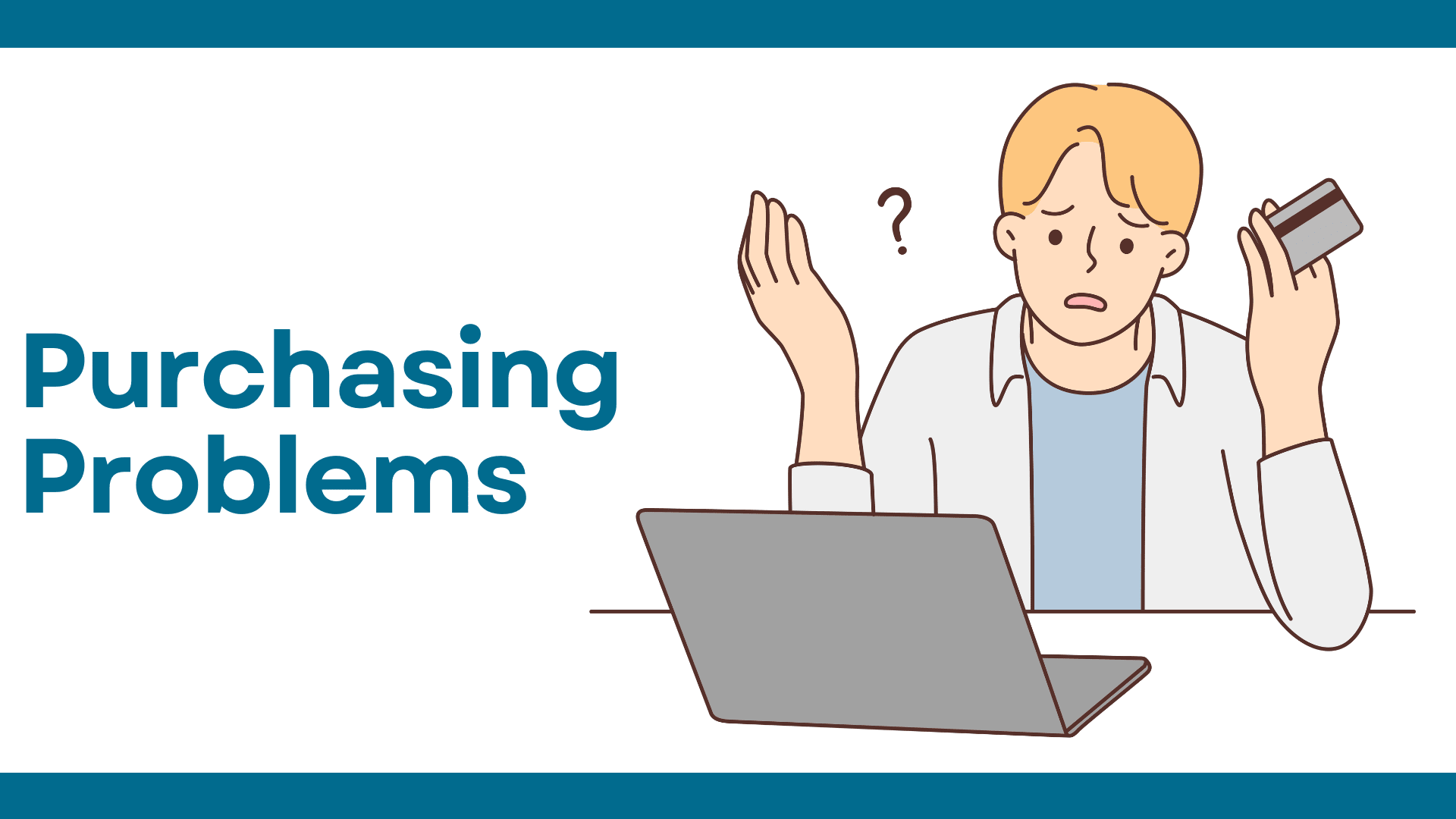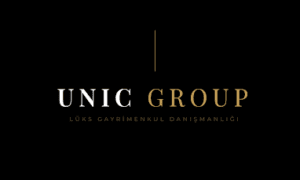Procurement today isn’t just about placing orders or negotiating prices. It plays a crucial role in shaping how efficiently a business runs, how well it manages costs, and how quickly it can adapt to change. When done right, procurement can be a powerful lever for growth and innovation.
Still, many organizations continue to face common procurement challenges that hinder progress, including delayed approvals, inconsistent supplier performance, budget overruns, and a lack of transparency. These issues don’t just slow down operations; they create ripple effects across departments, resulting in missed opportunities and increased risk exposure.
What’s more concerning is that these problems often persist even after investing in tools or restructuring teams. Why? Because the root causes are often strategic, not just operational.
In this blog, we’ll break down what’s holding procurement back and how enterprises can take a more thoughtful, strategic approach to fix it for good.
Common Purchasing Problems in Modern Enterprises
Procurement sits at the heart of business operations, but many enterprises, regardless of their size, industry, or maturity, still face recurring issues that slow down progress and inflate costs. These problems extend beyond day-to-day inefficiencies; they reveal systemic weaknesses that require strategic attention.
1. Lack of Visibility Across Procurement Processes
When procurement systems are fragmented, teams operate in silos with disconnected data sources, outdated tools, and inconsistent documentation. Without a unified view of purchase requests, vendor performance, contract terms, and spend patterns, it’s nearly impossible to make timely, informed decisions. This lack of visibility often results in duplicated purchases, missed savings opportunities, and difficulty in forecasting future procurement needs.
2. Inefficient Supplier Management
Enterprises typically work with a large number of suppliers spread across regions and categories. Without a standardized approach to onboarding, performance evaluation, and relationship management, organizations struggle to ensure quality, consistency, and accountability. Inconsistent supplier performance can lead to stockouts, delayed deliveries, or subpar goods and services, ultimately impacting customer satisfaction and internal workflows.
3. Poor Spend Control
Uncontrolled or unauthorized spending, often referred to as “maverick spending,” occurs when employees bypass approved vendors, negotiate their own terms, or make purchases without budget checks. This not only leads to financial leaks but also complicates tracking and auditing. In the absence of clear procurement policies, real-time monitoring, and automated enforcement mechanisms, maintaining cost discipline becomes a constant challenge.
4. Manual and Time-Consuming Processes
Many procurement workflows still rely on outdated methods like email approvals, spreadsheet tracking, or paper-based documentation. These manual processes are slow, prone to errors, and hard to scale. They increase cycle times, introduce compliance risks, and consume valuable team resources that could be better spent on strategic activities such as supplier innovation or cost optimization.
5. Compliance and Risk Management Gaps
Global sourcing introduces a variety of risks, including legal, regulatory, ethical, and environmental. If procurement teams lack mechanisms to verify supplier credentials, monitor contract compliance, or stay informed about changing regulations, they expose the organization to significant liabilities. Failure to comply with standards related to sustainability, data protection, labor laws, or trade regulations can result in fines, damage to reputation, and supply chain disruptions.
6. Failure to Align with Business Goals
Procurement decisions often occur in isolation from core business functions, such as finance, operations, and product development. When sourcing priorities are misaligned with company objectives, such as cost efficiency, innovation, or time-to-market, the business suffers. Procurement becomes a bottleneck rather than a value driver. Strategic alignment ensures that every purchasing decision supports broader organizational goals, such as profitability, agility, and competitive advantage.
Why These Problems Persist Despite Modern Tools
It’s a common assumption that implementing procurement software or digitizing workflows will automatically solve longstanding issues. However, many enterprises struggle with the same inefficiencies even after making significant investments in technology. The reality is, tools alone don’t fix broken strategies or disjointed operations.
Here’s why common procurement challenges often persist despite digital upgrades:
1. Legacy Systems and Patchwork Solutions
Many enterprises operate on legacy ERP systems or a mix of disjointed procurement tools that have been cobbled together over time. These systems were often built for a different era, one with less complexity, fewer vendors, and slower supply chains. As a result, they lack real-time capabilities, automation, or the flexibility needed to support modern procurement strategies. Integrations are challenging, data is inconsistent, and procurement teams are left with more manual work, rather than less.
2. Organizational Resistance to Change
New tools are only as good as the people who use them. Unfortunately, many employees revert to familiar, manual methods, emailing POs, tracking invoices in spreadsheets, or bypassing platforms altogether. This resistance often stems from poor user experience, inadequate training, or a lack of understanding of the benefits. Without active change management, even the best technology fails to deliver value, and common procurement challenges persist beneath the surface.
3. Siloed Departments and Processes
Procurement impacts nearly every department, including finance, legal, operations, product, and even marketing. However, when these functions fail to communicate or align their goals, procurement becomes fragmented and inefficient. For instance, if legal is unaware of vendor negotiations or finance isn’t looped into purchasing decisions, it leads to delays, budget overruns, and compliance gaps. These silos prevent organizations from establishing a streamlined, cross-functional procurement process, one of the primary reasons why common procurement challenges persist.
4. Minimal Investment in Training and Enablement
Technology adoption requires more than just onboarding emails or walkthrough videos. It requires ongoing training, contextual support, and a cultural shift in how teams think about procurement. When companies underinvest in user enablement, employees often misuse or underutilize the platform, leading to fragmented workflows and frustration. This disconnect between tool and team creates a false sense of digital maturity while core issues like approval delays and manual work persist.
5. Expanding Supplier Ecosystems Without Process Maturity
As businesses grow and expand globally, their supplier networks become more complex. Managing dozens or hundreds of vendors across regions, currencies, languages, and regulatory environments adds significant strain to procurement processes. Without strong data governance, supplier segmentation, and automated onboarding or compliance checks, organizations become overwhelmed. This complexity, without scalable systems in place, only amplifies common procurement challenges rather than solving them.
Despite the availability of powerful procurement platforms today, these root issues highlight an important truth: technology is only a multiplier of process maturity and organizational alignment. To truly eliminate persistent purchasing problems, enterprises must pair tools with strategy, training, and cultural change.
Strategic Approaches to Tackle Purchasing Problems
Persistent procurement issues don’t disappear with quick fixes or new software alone. Solving them requires a shift from tactical firefighting to strategic planning. The most successful procurement transformations start with a mindset change and are followed by structured, long-term approaches across people, processes, and technology.
Here are six proven strategies to address the root causes of purchasing problems and move procurement into a leadership role:
1. Centralize and Digitize Procurement Operations
One of the biggest roadblocks to efficient procurement is scattered tools and decentralized workflows. Centralizing procurement operations using a modern, cloud-based platform helps unify supplier data, automate request approvals, and ensure consistency across teams and locations.
Digitization eliminates manual paperwork and enables procurement teams to track purchase orders, contract milestones, and supplier performance in real time. With built-in audit trails and automatic alerts, organizations gain better control, faster turnaround times, and a single source of truth for all purchasing activities.
Key benefits:
- End-to-end visibility of the procurement lifecycle
- Faster approvals and reduced cycle times
- Real-time tracking of orders, invoices, and payments
2. Implement Strategic Supplier Relationship Management (SRM)
Many organizations focus on cost reduction and order fulfillment when managing suppliers, but long-term value comes from partnership, not just price negotiation. A strategic SRM program turns vendors into collaborators who can drive innovation, reduce risk, and improve quality.
This means categorizing suppliers by importance and risk, setting up performance scorecards, and conducting regular business reviews. Advanced SRM includes co-development projects, early supplier involvement in product design, and shared KPIs. When you treat key suppliers as strategic partners, you’re more likely to receive better service, early issue warnings, and preferred terms.
Key benefits:
- Stronger supplier loyalty and performance
- Reduced disruptions and improved responsiveness
- Innovation through supplier collaboration
3. Adopt Spend Analytics and Forecasting
Spend analysis is essential for identifying where the money goes, who’s spending it, and whether it’s aligned with business goals. With the right tools, procurement leaders can segment spend by category, supplier, department, or geography and uncover savings opportunities or risks.
Forecasting takes this a step further by using historical data and external factors (like market prices or supply chain trends) to predict future demand and costs. This helps teams plan purchases more strategically, avoid stockouts or over-ordering, and negotiate better terms in advance.
Key benefits:
- Data-driven decision-making
- Early detection of cost overruns and contract leakage
- Better demand planning and supplier negotiations
4. Integrate Procurement with Business Strategy
Procurement should not operate in a silo; it must be embedded in broader business planning. This means involving procurement early in product development, market expansion, and capital planning discussions. When sourcing decisions are aligned with long-term business goals, procurement can optimize not just cost, but also speed, innovation, and risk.
Cross-functional collaboration is critical here. Procurement must work closely with finance (for budget control), legal (for contract compliance), operations (for fulfillment), and sustainability (for ESG targets). This alignment transforms procurement into a proactive business partner rather than a reactive cost center.
Key benefits:
- Alignment with business growth and innovation goals
- Faster time-to-market with supplier support
- Improved cross-functional efficiency and accountability
5. Establish Clear Governance and Compliance Protocols
As supplier networks grow, so do the risks related to ethics, regulation, and performance. Strong governance ensures that procurement practices are transparent, consistent, and enforceable. This includes setting up standardized policies around vendor selection, contract management, ESG compliance, and invoice verification.
Automated controls and workflows can flag non-compliant purchases, enforce approval thresholds, and maintain audit logs. Governance frameworks also help organizations manage reputational risk, ensure regulatory compliance, and support sustainable sourcing goals.
Key benefits:
- Reduced risk of fraud, waste, and non-compliance
- Simplified audit processes and documentation
- Consistent adherence to procurement policies
6. Invest in Change Management and Training
Even the most sophisticated tools and processes will fail if people aren’t trained or motivated to use them properly. A strategic procurement transformation depends heavily on change management, a structured effort to shift behaviors, mindsets, and skills across the organization.
This includes regular training sessions, peer champions to model best practices, continuous user support, and feedback loops. Teams need to understand not just how to use procurement tools, but why these changes matter to their work and the organization as a whole. Procurement maturity is as much about people as it is about platforms.
Key benefits:
- Higher user adoption of procurement systems
- Improved consistency and accuracy in execution
- A culture of continuous improvement and accountability
Together, these strategic approaches help enterprises move beyond short-term fixes and tackle purchasing problems at their core. The result is a procurement function that is more agile, data-informed, aligned with business objectives, and ultimately, a key contributor to competitive advantage.
Role of Technology in Strategic Procurement
Digital transformation is no longer optional; it’s essential for modern procurement. But success doesn’t come from simply adopting tools; it comes from using them strategically. The most effective organizations treat technology as an enabler of smarter processes, faster decision-making, and stronger supplier relationships.
AI and Automation
Artificial intelligence and automation are revolutionizing procurement workflows. From auto-matching purchase requests to approved suppliers to identifying pricing anomalies and policy violations, AI reduces manual effort and improves decision speed. For example, intelligent bots can flag duplicate invoices, recommend vendors based on past performance, or automatically route purchase orders for approval, cutting down days of back-and-forth communication.
This not only accelerates procurement cycles but also reduces human error and frees up teams to focus on strategic initiatives like supplier development and innovation sourcing.
Cloud-Based Procurement Platforms
Cloud-based platforms offer a centralized hub where all procurement activity from requisition to payment can be managed in real time. They provide remote access, instant updates, and seamless collaboration across geographically dispersed teams. This is particularly valuable in today’s hybrid work environment, where stakeholders are rarely in the same room.
With integrated modules for sourcing, contract management, supplier onboarding, and invoicing, these platforms simplify workflows and reduce dependence on legacy systems and disconnected spreadsheets.
Dashboards and Real-Time Analytics
Procurement generates massive volumes of data, but raw data is only valuable when it leads to actionable insights. Advanced dashboards and analytics tools help procurement leaders visualize spend trends, identify bottlenecks, monitor supplier performance, and track compliance metrics.
For example, real-time analytics can alert teams to budget overruns, vendor delays, or missed discounts, allowing quick corrective actions. Over time, these insights inform better strategic sourcing, budgeting, and risk mitigation decisions.
Cross-Functional Collaboration: The Hidden Key
One of the most overlooked drivers of procurement success is internal collaboration. Procurement doesn’t operate in a silo it intersects with nearly every business function, from finance and legal to product and IT. When these departments are misaligned, procurement becomes reactive, inconsistent, and inefficient.
Why Collaboration Matters
Procurement decisions influence budgets, cash flow, product timelines, and even brand reputation. Without collaboration, key stakeholders are often left out of critical discussions, resulting in disjointed processes and missed expectations. For example, legal may approve a contract that finance hasn’t budgeted for, or procurement may select a supplier that IT can’t integrate with.
To transform procurement into a strategic enabler, companies must break down silos and encourage shared ownership of procurement goals.
How to Build Stronger Alignment
- Set Shared KPIs: Align metrics across departments to reinforce common objectives. For instance, supplier delivery performance can be a shared KPI between procurement and operations, while cost savings may tie into finance goals.
- Create Joint Review Cycles: Involve stakeholders from multiple teams in supplier evaluations, quarterly business reviews, and contract renewals. This ensures broader accountability and better-informed decisions.
- Use Unified Communication Channels: Leverage shared dashboards, procurement platforms, or project management tools to keep everyone informed in real time. This transparency prevents surprises and encourages collaboration.
When procurement works hand-in-hand with other teams, it shifts from being a transactional department to a strategic business partner.
Conclusion
Procurement is no longer just a back-office function focused on cost control; it’s a core part of how modern businesses operate, grow, and compete. Yet many organizations continue to grapple with common procurement challenges like fragmented processes, limited visibility, and poor supplier coordination.
These problems persist not due to a lack of tools, but due to deeper strategic gaps: outdated mindsets, siloed teams, and underinvestment in process and people. To overcome them, businesses need a holistic approach, one that combines technology, strategy, and collaboration.
By centralizing operations, adopting smarter analytics, engaging stakeholders across functions, and treating procurement as a key strategic driver, organizations can unlock new levels of efficiency, agility, and resilience.
The future of procurement isn’t about doing more, it’s about doing things smarter, faster, and together.





























